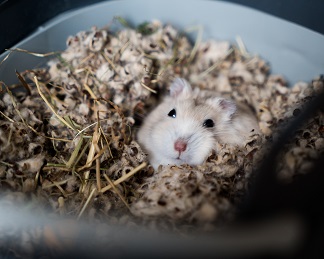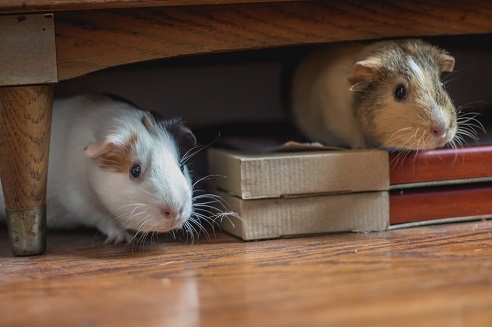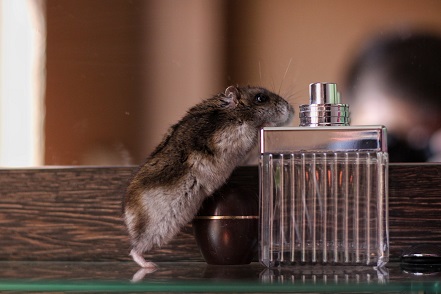Ensuring a safe and secure environment for your pet hamster is essential for their well-being and happiness. Hamsters are curious and agile creatures, and their cages can pose potential hazards if not properly managed.

Common Safety Hazards and Corresponding Measures
This article identifies and discusses common safety hazards that may exist in a hamster cage and provides tips on how to mitigate these risks.
Bar Spacing
In cages with wide bar spacing, hamsters may attempt to squeeze through, potentially leading to escape or injury. Select a cage with appropriate bar spacing, typically around 1/2 inch (1.3 centimeters), to prevent such incidents.
Small Parts and Choking Hazards
Accessories, such as plastic toys or chew sticks, can pose choking hazards if they are too small or break easily. Ensure all cage items are of an appropriate size and made of safe materials that won’t splinter or shatter.
Unsafe Bedding
Certain bedding materials, like cedar and pine shavings, emit harmful fumes that can cause respiratory issues in hamsters. Opt for safe bedding options such as aspen shavings or paper-based bedding to avoid potential health problems.
Toxic Substances
Keep hazardous substances, such as cleaning chemicals and pesticides, away from the hamster’s living area. These toxins can be fatal if ingested or inhaled by your pet.
Accessible Electrical Cords
Hamsters are natural chewers and may gnaw on electrical cords within their reach. Conceal or elevate cords to prevent accidental electrocution or entanglement.
Cage Placement
Avoid placing the cage in direct sunlight or near drafts, as hamsters are sensitive to temperature fluctuations. Keep the cage away from potential hazards like sharp objects or heavy items that may fall onto the cage.
Inadequate Ventilation
Poor ventilation can lead to a buildup of ammonia from urine and unpleasant odors. Ensure adequate airflow through the cage to maintain a fresh and healthy environment.
High Platforms or Drops
Multi-level cages with steep ramps or high platforms can pose a risk of falling and injury to your hamster. Use gentle slopes and add non-slip surfaces to make climbing safer.
Lack of Hideouts
Hamsters require hiding spots to feel secure. Provide hideouts or tunnels to reduce stress and allow them to retreat when feeling overwhelmed.
Unattended Playtime
Supervised playtime outside the cage is essential, as hamsters can quickly escape into small gaps or get lost in a large room. Always supervise your hamster during free-roam sessions.

Conclusion
Being aware of potential safety hazards in a hamster cage is essential for the well-being of your pet. By addressing common risks, such as inappropriate bar spacing, small choking hazards, unsafe bedding, toxic substances, accessible electrical cords, cage placement, inadequate ventilation, steep platforms, lack of hideouts, and unattended playtime, you can create a safe and enriching environment for your furry friend.
Regularly inspect the cage, maintain proper ventilation, and choose suitable accessories and bedding to ensure a hazard-free and comfortable home for your beloved hamster. A safe and secure environment will allow your pet to lead a happy, healthy, and stress-free life in its cozy cage.

